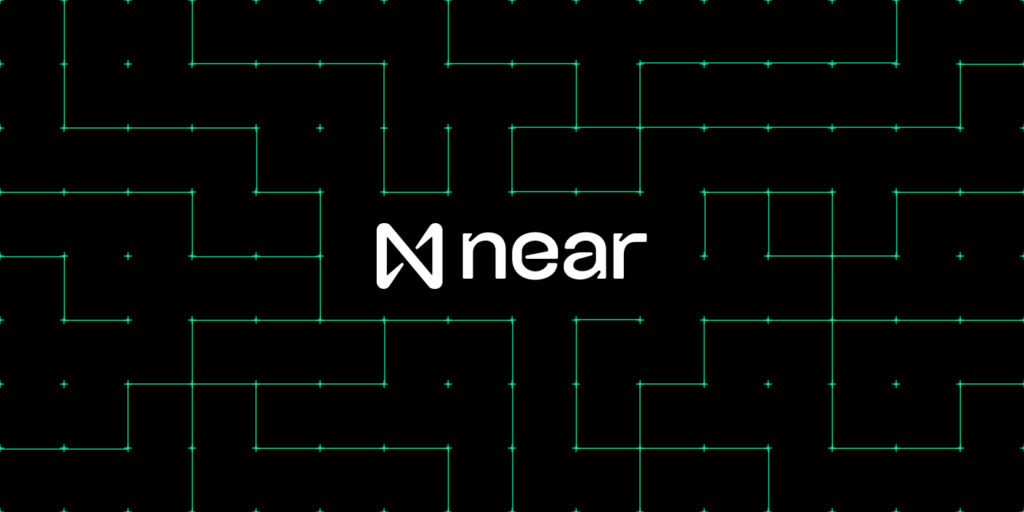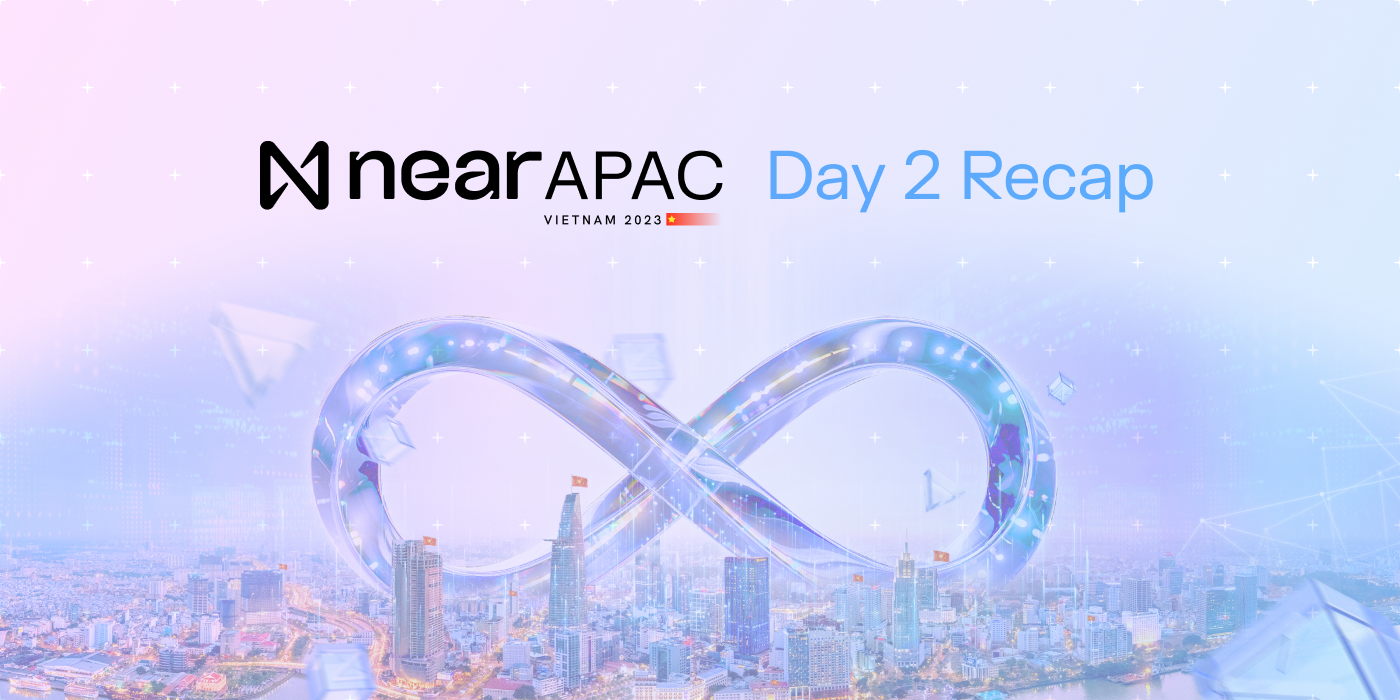NEAR APAC Day 2 Recap: Asia Gaming Trends, Interoperability, and Web3 for Brands
It would’ve been hard to imagine topping a jam-packed Day 1 of NEAR APAC, but Day 2 managed to do just that. The gorgeous Sunday in Saigon covered a wide range of topics, including significant discussions on the future trends in Web3 such as how brands can hop on board the Web3 bandwagon and a creative proposal to unite all Layer 1’s for mass adoption.
With each session, industry leaders shed light on challenges and the future trajectory of the fast-paced Web3 ecosystem in APAC. From the unique positioning of Web3 gaming in Asia to the potential rise of the next Web3 cycle, the discussions were varied and far-reaching. Let’s dive on into all the Day 2 happenings at NEAR APAC in Vietnam!
APAC experts discuss the next big trends in Web3
Let’s begin the Day Two recap with a standout panel diving into the next big Web3 trends. Experts agreed that it won’t just be about technological progress, but also the transformative ways that blockchain will weave into daily life. Asset tokenization, generative AI integration, and the proliferation of decentralized creator economies were some top trends on the table.
“Generative AI and asset tokenization are revolutionizing Web3 ecosystems, especially in growing economies like India,” said Sudeep Choudhari, head of blockchain at the India National Payments Corporation. “As integration across borders accelerates, we’ll also challenge traditional FX rates, anticipating a future with minimal cross-border payment costs.”
Hanna Tantoco, APAC Marketing Director at Blockdaemon, piggybacked on the transformative role of generative AI in enhancing blockchain user experiences. She also pointed out the rising prominence of gaming in Asia, particularly on NEAR. Additionally, she highlighted Singapore’s burgeoning creator economy, powered largely by NFTs, as another future trend.
How brands can futureproof themselves with blockchain
Another morning highlight was a panel discussion about how brands and enterprises can harness the potential of Web3 to adapt and thrive. Key points revolved around democratizing user data control, countering data monopolization by tech giants, tokenizing assets, and challenges in linking the physical and digital worlds.
“Enterprises often face challenges with hiring experts who may quickly move on to other projects,” observed Oleg Fomenko, founder of SWEAT. “While consultancies can provide insights, the real breakthrough comes when you start building and experimenting with MVPs. Though initial attempts might fall short, perseverance can yield surprising results.”
Alex Chiocchi, CPO of Pagoda, added that Web3 streamlines verification, challenging traditional ad networks. By using an open blockchain system, excessive fees are prevented, promoting shared value with users. This shift allows benefits like self-custody and reputation while redistributing margins back to the people.
Among the key takeaways from the session was that businesses harnessing blockchain’s capabilities can anticipate a transformative impact on the global economy, especially with asset tokenization’s projected growth through 2030. As brands navigate challenges like ensuring digital authenticity and early adoption, having a targeted strategy is crucial.
Web3 gaming: Asia’s landscape and blockchain utilization
The Asian gaming landscape is buzzing with the rise of Web3 development, promising an unprecedented era of innovation and user empowerment. Central to discussions at the “Web3 Gaming: Asia Landscape” session was the gaming community’s appetite for asset and data ownership, often prioritizing this over the complexities of Web3 itself.
After attending Korea Blockchain Week, it’s evident that Japan and Korea’s mobile giants are pioneering in Web3 gaming,” said Luke Xie, founder of gaming VC fund Press Start Capital. “As opposed to Web3 games like Axie, creating AAA games takes much longer. Given the rapid pace of crypto, former mobile developers align better with this fast-paced dynamic.”
Ishank Gupta, co-founder of Kratos Studios in India, emphasized that gamers prioritize asset and data ownership over backend Web3 tech. He predicted that blockchain games should bring benefits that gamers care about with a focus on ease of usability. For instance, leading studios in India are integrating well-known IP into Web3 games while ensuring they remain engaging.
“We’re witnessing a new golden age of gaming driven by indie studios,” added Xie. “Small teams, empowered by AI, are crafting games that punch above their weight. We believe that on-chain gaming, while difficult to execute at present, is the future. It’s all about selecting the right chain based on tech, community, and support. NEAR excels at all of the above.”
The panel agreed that the Web3 gaming industry in APAC and beyond is undergoing a transformative phase, with blockchain offering gamers more control over assets and data. As developers continue to build, the focus will be on seamless onboarding, speed, and user-centric experiences. Blockchains should be subtly integrated without disrupting the gaming experience.
Bringing Web3 together with Multichain: a call for collaboration
Today’s blockchain landscape consists of independent Layer 1’s vying for supremacy, bringing up the core question of interoperability. With users often navigating several ecosystems, creating cross-chain experiences becomes paramount. This star-studded panel explored new frameworks to address hurdles and challenges in the current siloed multi-chain user experience.

“Web3’s ethos is modularity, similar to Lego blocks,” explained NEAR CEO Marike Flament. “While we prioritize access and user growth, interoperability challenges persist. But trust and unified solutions drive adoption, not a fractured approach. It’s essential that technology seamlessly serves the end user.”
Cameron Dennis, CEO of Banyan, added that key management is a critical issue. He pointed out ways to simplify these processes with tools like FastAuth. Dennis added that addressing the noticeable gap in cross-chain liquidity should be a focus. He believes that a true multichain future that drives adoption will solve key and wallet management for a better UX.
“Reflecting on a decade in this space, the competitive landscape has shifted,” mused Mary Beth Buchanan from the Cardano Foundation who is also an advisor to NEAR, “Earlier, exchanges hesitated to collaborate, fearing a loss of advantage. Today, there’s a collective push to learn from one another, ensuring technology works seamlessly for the end user.”
Cameron believes that reinforcing the current ecosystem is paramount before extending cross-chain efforts, even though creating a decentralized internet remains a resource-intensive endeavor.
Marieke stressed the importance of open-source technology in attracting top talent. Drawing inspiration from Web2’s approach to 5G standardization, she suggested that Layer 1 leaders could unite in an ‘L20’ alliance to champion unified standards, fostering a unified vision for the industry’s future.
And that’s a wrap for the official Day 2 sessions at NEAR APAC. From gaming and brand adoption to multi-chain standards and collaboration, it was clear that this first-of-its-kind regional event was a rousing success for developers and the NEAR community alike. Sunday in Saigon rolls on with more side events and after-parties, so stay tuned for the full ICYMI tomorrow.
Share this:
Join the community:
Follow NEAR:
More posts from our blog

NEAR Launches Infrastructure Committee with $4 Million in Funding


